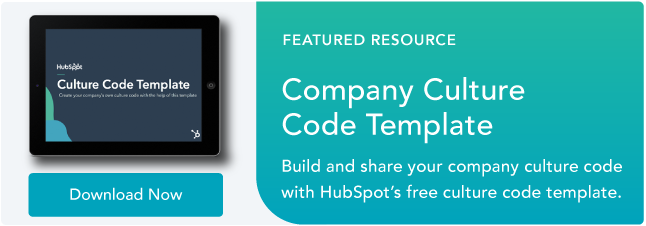
Houston, we have a turnover problem.
As the years pass, there seem to be a growing number of studies on employers struggling to retain their people -- and the high costs associated with the resulting turnover. What’s at the bottom of it? Is it workplace culture? Is it missed salary expectations? Or can it all be lumped under the crucial umbrella of communication?
It’s that last point that’s often at the root of employee dissatisfaction -- and good communication starts before new hires even begin work. Many times, the key is providing the foundation of a formal onboarding program. It’s something that 98% of executives say is crucial to employee retention, as it can help bring new hires up to speed quickly and accurately, as well as establish mutually realistic expectations between employees and managers. 
But onboarding new content team members -- both full-time and freelance -- can be challenging. Sure, it’s an important part of talent retention, but how can it be efficiently and effectively carried out, especially with limited time and resources? Below, we’ve outlined a process you can put into practice for a new content team member’s first 90 days on the job -- a period of time when 20% of turnover can occur -- as well as listing specific considerations for onboarding freelance content team members.
90-Day Content Team Onboarding Checklist
Before Day 1
You don't need to wait for your new hire to arrive for her first day at work before you start integrating her into the company. In fact, you can start the onboarding process as soon as she accepts your job offer -- and here are a few of the ways how.
Prepare Essential Documents
First, ensure that you have all the relevant administrative forms ready for when your new hire arrives. In the U.S., these include forms like a W-4 and an I-9, depending on the employee’s work authorization. A checklist can be especially helpful here, as there are a number of registrations and laws that might apply to any hiring you do, depending on the size and type of your company. Details are available through the Internal Revenue Service (IRS) website. Also keep in mind any internal documents you need your employees to sign or complete, like non-disclosure agreements (NDA).
It might also be helpful to prepare something that employees can read to get a sense of your company’s history, values, objectives, environment, and culture. Many employers create a handbook for this purpose, but feel free to look outside the box here -- HubSpot, for example, uses a Culture Code.
Some of this material should include information about buyer personas, especially for new content team members -- it’s essential that they know exactly who your organization’s ideal customer is. That can be part of a style guide that specifies the tone of voice for all official content -- with specifics like that in mind, it’ll help your new hire ramp up on writing content that resonates effectively.
Once your new hires start to include designers, add things like iconography, fonts, color scheme, and ideal logo specifications within your style guide. That can help to ensure your brand is reflected with integrity, regardless of who is producing your content.
Assign Mentors
No matter how thorough your handbook or culture code might be, new hires will most likely have more questions that they only think to ask once they’re in their new work environments. That’s one reason why mentors can be so helpful -- so that new employees have someone, or a group of people, to show them the ropes and help them assimilate.
Assign each new hire a mentor -- this should be someone different from the employee’s manager and can be either higher or lower-ranking -- and schedule bi-weekly meetings for the next 90 days. Group mentoring and peer mentoring are both viable options.
Days 1-30
The first 30 days of a new employee’s tenure are all about learning. Avoid rushing her to start contributing to high-level business objectives within this period -- remember, these initial days of exposure can make or break your new hire’s retention, so allow for a learning curve.
Arrange the first meeting between your new hire and her mentor within the first week of starting -- that serves as a great opportunity for the new hire to ask any questions about the company, products and services, culture, customer base, and facilities. During this meeting, it’s a good idea to collaboratively develop a 90-day plan for the new hire, with key milestones that she should aim to reach by certain intervals during this time period. That way, your new hire can keep pace with what’s expected of her, which allows her to seek out specific advice and ask the right questions about targets.
Add Context to Introductory Materials
As the new hire progresses through her first month of work, new opportunities will arise that will provide context to some of the introductory materials she received, like a culture code or handbook. It’s around this time when the new hire should observe things like client presentations, brainstorming sessions, and other team meetings to help bring her up to speed about the specific projects to which the organization’s products and services are applied.
Even more important, however, is the new hire learning not only about the company’s objectives -- but also, the content team’s specific role in achieving these goals. Discussing the parameters around these objectives can clarify her responsibilities and show how her work has an impact on the company’s enterprise value. Documentation can help, as well as a visual that illustrates these workflows. Here’s one that shows, for example, the steps involved in creating an infographic, clearly depicting which content team member is responsible for each stage of the process:

Visual aids that clarify roles -- like workflow diagrams -- can be especially helpful when you’re working with freelancers who might “come and go” on the team for short-term projects. Plus, visuals can help with memory -- people remember 55% more information when a relevant image is paired with it -- which is important for new hires who are absorbing a lot of material in a short period of time.
Learning Core Tools
Finally, if there are any core tools or new software that the new hire needs to use for her job, this is the time for her to develop those competencies. Schedule any necessary trainings on how to use internal databases, content management systems, or other resources that have a learning curve.
Days 31-60
In days 1-30, your new hire was focused on learning, and on gleaning the context of how her work fit into the company’s goals, products, and services. Now, it’s time to begin acting on that context and becoming well-versed in those tasks that make a contribution to the organization.
Adding Collaboration and Context to Processes
During this period, new hires should become accustomed to routine processes and can start contributing to the content team’s projects. And while it might be too soon to have them play a major role in mission critical projects, they can still observe the tasks carried out around it, while contributing to it on a smaller scale.
Let’s say your new hire is a copywriter. One effective way to have him scale up his workflow -- so he can get to the point of writing copy for high-stakes properties like product pages or downloadable content -- is to assign one or two in-depth blog posts that require similar research and cross-team collaboration as higher-level initiatives, but on a smaller scale. Be sure to offer constructive feedback on all tasks in this phase, celebrating small wins while also identifying areas of improvement, so that the employee can continue to grow and improve.
Given this introduction to cross-team collaboration, this stage is a good time for new hires to have conversations with the folks from other teams that they might be working with in the future, like sales and PR. Set up a plan for your new hire to schedule informal lunches or coffee meetings with these other employees, to help facilitate an understanding of how each department works together to fulfill the company’s objectives.
Continue the Feedback Loop
Keep in mind that as new hires progress through their first several weeks, milestones and benchmarks may shift or need to be tweaked. Continue regular employee-manager meetings during this period to modify and finalize the 90-day plan as necessary with concrete performance goals. That type of thing can help to boost motivation -- 38% of workers whose managers set clear priorities and goals are engaged in their work, compared to 4% of those whose managers don’t.
By Day 90
Independence and More Collaboration
In the final 30 days of this onboarding framework, the focus should be on fostering independence and autonomy for your new hire. With a thorough understanding of the company, its offerings, interdepartmental relations, and processes, new hires should be ready to start holding themselves accountable and playing a bigger role on significant projects.
For writers, tasks within this period that involve required assets from other teams -- like design -- are ideal, as they serve as a test of collaboration skills.
Assess and Move Forward
At the end of 90 days, assess the success of this framework, identifying areas of success and improvement for the future. It’s important to note that the employee-manager relationship doesn’t end here, so continue to meet on a regular basis -- perhaps weekly -- to continue to assess skills and interest as the new hire progresses in her career.
Wherever possible, use data to verify success. If your employee has written copy for new product pages, for example, examine its impact on factors like conversion rates. Blog posts can be assessed based on traffic.
Onboarding Freelancers
Scaling a content team often requires the addition of freelance professionals, like writers and designers. Because freelancers often work remotely, documenting work duties and maintaining frequent communication is crucial.
If you anticipate taking on a large number of freelancers, it might be helpful to create introductory assets -- like videos -- that cover policies, guidelines, and processes that freelancers will need to follow. This way, you only have to explain the process once and you can share the same video with every new freelancer that joins your team.
Remember when we covered the introductory materials that are helpful to full-time new hires? Keep your freelancers in mind as you create those, as even though they might only join your team on a project-by-project basis, understanding the style and culture of your organization can help them to add a more authentic voice to the work they do for you.
If you want to onboard your freelancers successfully, remember that they’re real team members -- not just replaceable labor. Include them in relevant strategic discussions, just as you would regular employees and communicate frequently. We recommend platforms like Slack for staying in touch, as it allows you to communicate using direct messages, audio calls and video calls.
Communication is Vital
Even when the first 90 days concludes, maintain communication that emphasizes how invested you are in your new hire’s future. Listen to concerns, identifying gaps whenever possible, and when new interests are expressed, formulate a plan for how those things can be incorporated into the employee’s main responsibilities in a way that has a positive impact on the company.
How do you ensure a smooth onboarding process for content team members? Let us know in the comments.

No comments:
Post a Comment